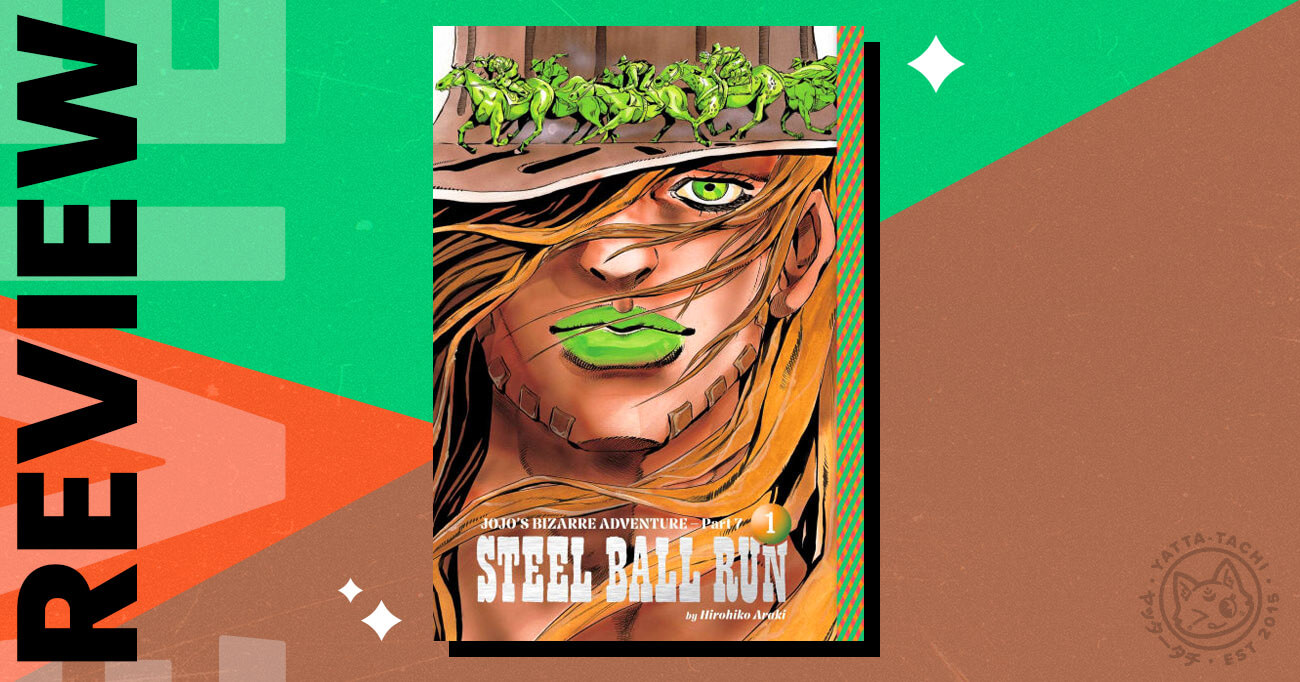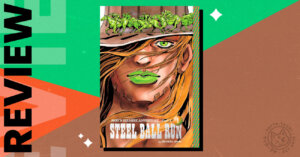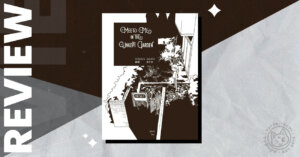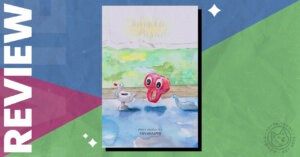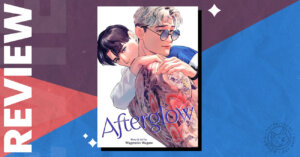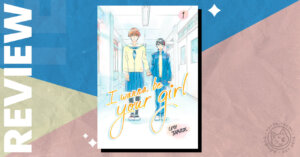Implied Animal Death. Gun Violence. Medical Abuse. Everyday Ableism.
Synopsis
Part Seven of JoJo’s Bizarre Adventure is finally here! Following the reconstruction of the Universe at the end of Part Six, it’s time to travel back to the Wild West of the 1890s to meet some brand new characters with some familiar names. Johnny “Joe Kid” Joestar is a former superstar jockey laid low after he is left paraplegic following an altercation. Unable to walk or ride anymore, he tries to live his life as best he can. Then in a chance encounter with the mysterious Gyro Zeppeli he gets hit by a metal ball and for a brief second can move his legs again. Determined to find out what happened and just exactly what Zepalini’s balls can do, he follows him into the 80 day Steel Ball Race from San Diego to New York. The $50,000,000 reward attracts a wide range of characters, from all walks of life. But Johnny only has his eyes on Zepalini…
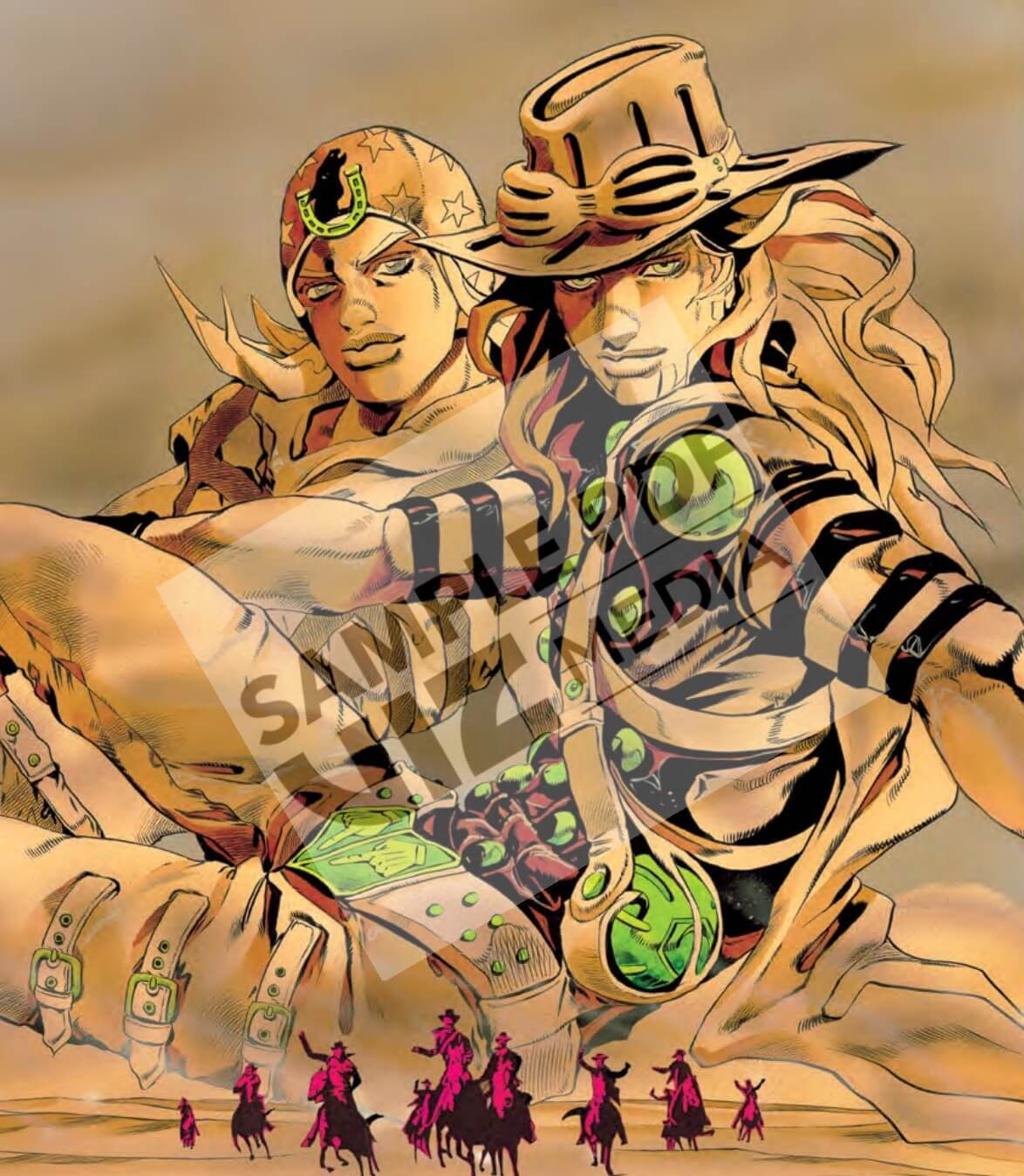
The Good
Steel Ball Run is just as camp as its predecessors. Araki’s talent for fashion is on full display, showing his own unique take on the wild west. There are plenty of Easter eggs for long-time fans, whilst still being a complete fresh start so as to be welcoming to those who have never read the series before. It’s designed to be a brand new jumping off point, requiring absolutely zero knowledge of the series as a whole. Readers new and old will enjoy all the pop culture references, and find new songs to add to their playlists!
When I heard the premise of the story, it sounded as though Johnny was seeking a magical cure to his disability. Whilst the notion of “curing” a disability born from a traumatic experience isn’t necessarily an ableist concept, ableism often creeps into these stories regardless. But I was pleased to find that is not the case here! He’s not chasing after Zepalini to find a cure to move his legs again, he’s chasing after him because he’s curious about what happened. And who can blame him? Who wouldn’t want to chase after a mysterious man with magical balls that can twist and turn the world around them?
Johnny also doesn’t seem that bothered by becoming disabled. He isn’t filled with self-hate and self-loathing, he’s more just frustrated at how everyone abandoned him straight after. Whilst it could be argued that this is a case of “disability as punishment”, I am willing to overlook it as simply a plot device.
On a similar note, I was happy to see an era-accurate wheelchair. Often, chairs are badly drawn and badly researched, but this one felt like it fit the setting and the character perfectly. Wheelchairs at the time tended to just look like ordinary furniture with wheels attached. Whilst most were more ornate than the one Johnny has, it fits with his situation much better for him to have one that is simpler.
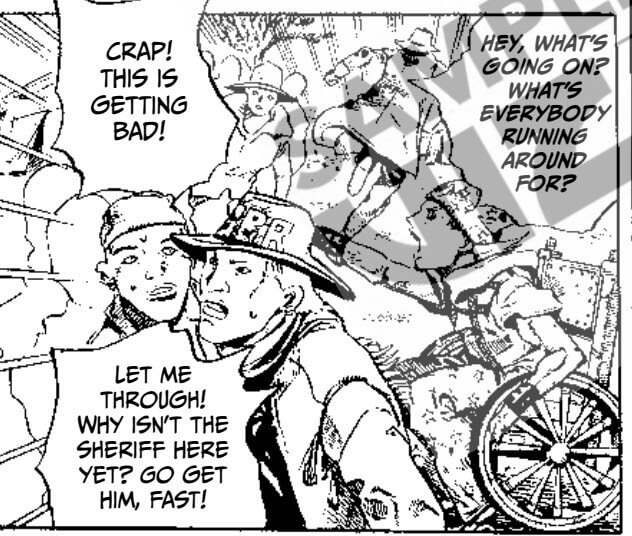
Steel Ball Run is, above all else, a Horse Girl Story the likes of which we haven’t seen since Lord of the Rings. The horses are all part of the storytelling, their breed, personality, and back story all integral to fleshing out their riders. We see Johnny’s persistence, knowledge, and kindness through the bond he shares with his packhorse. They go from antagonists to allies, the pair who everybody dismisses because they cannot look past their own prejudices. Only Zepalini can see their potential, and how age and disability show experience not failure. It’s peak horse girl storytelling. I give it a 8/10 on the horse girl scale, missing out on top marks because the horses don’t yet have names. Although I am sure this will be fixed in the next few volumes.
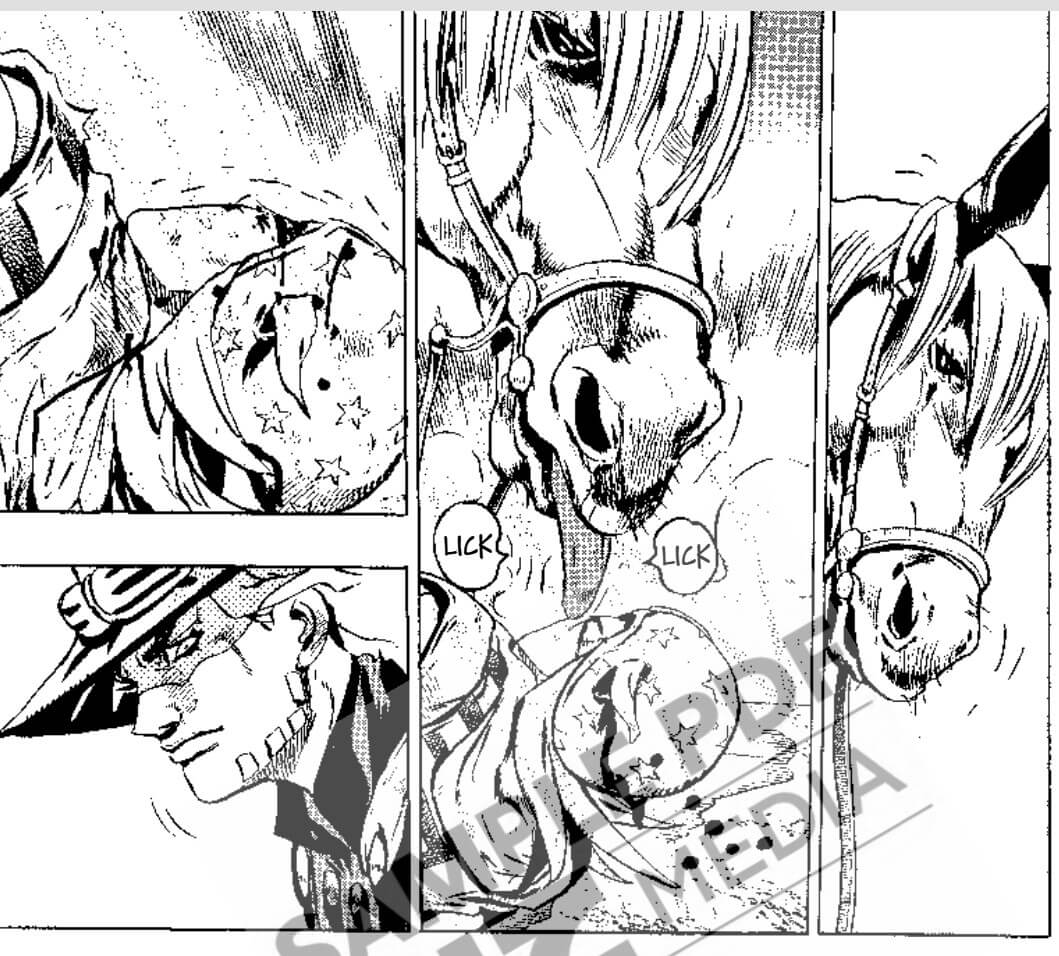
The Bad
JoJo’s Bizarre Adventure was never known for its well-rounded female characters. That was until Stone Ocean where we got a whole prison full of interesting, well-developed, fascinating ladies with epic powers. Alas, it appears that Araki decided he’d had enough of writing interesting women. In all of volume one, there are only four women, and none of them are given a name. One of them is a sister, one of them is a child bride, one is a mystic, and the other is only there for her breasts to fall out in order to demonstrate how lucky Pocoloco is.
It’s a real shame since there are plenty of women from the time period who would make excellent inspiration for characters! From Star Marksman Annie Oakley, to Trail-Blazing Mary Fields. (If you’re ever in Fort Worth, Texas, I highly recommend you check out the National Cowgirl Museum and Hall of Fame!)
It’s very frustrating and upsetting to know that Araki has the ability to write excellent women and stories about them that don’t revolve around their relationships to men, he’s just choosing not to.
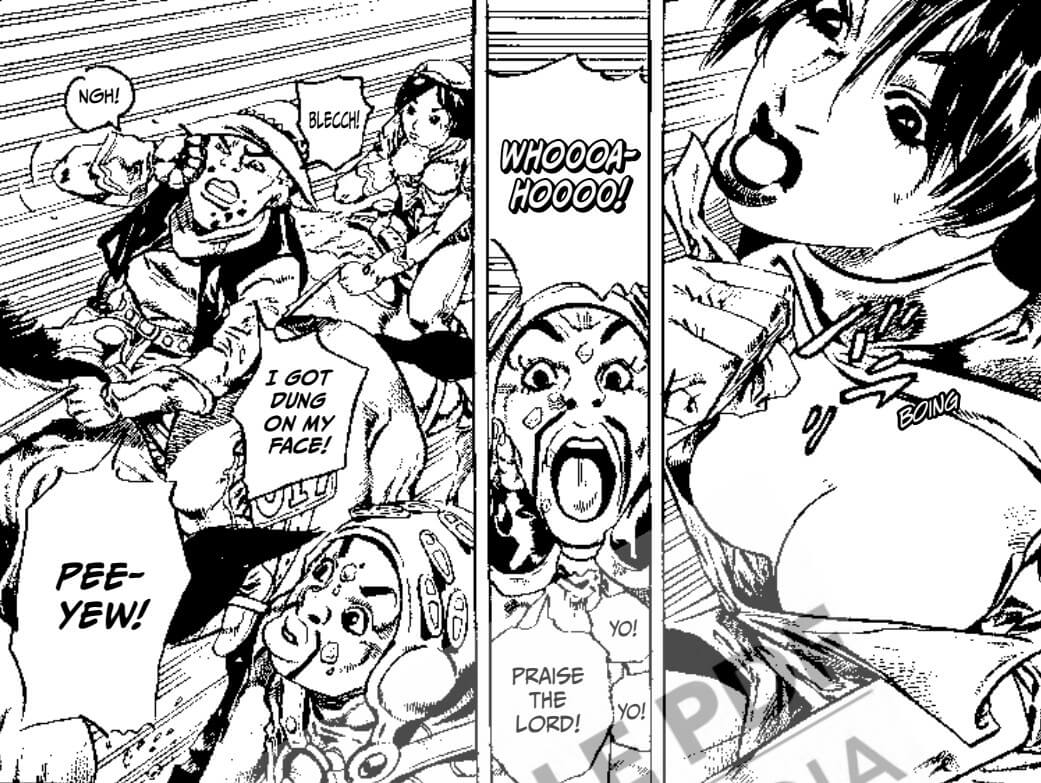
Like the rest of JoJo’s Bizarre Adventure, there’s a certain amount of “Your Mileage May Vary” regarding racist portrayals of characters. Being set in 1890s America, I’m really glad to see a Native American racer, and a Black racer who is the son of a freed slave! These characters should be included. However, the way these characters are presented might not be seen as appropriate or sensitive. The Native American tribe introduced is seen as violent and angry with distorted faces, but there are still members of the tribe who are not like that and these members become protagonists. The exaggerated facial expressions of the tribe are monstrous and grotesque, but that’s just how Araki draws all antagonists throughout the series.
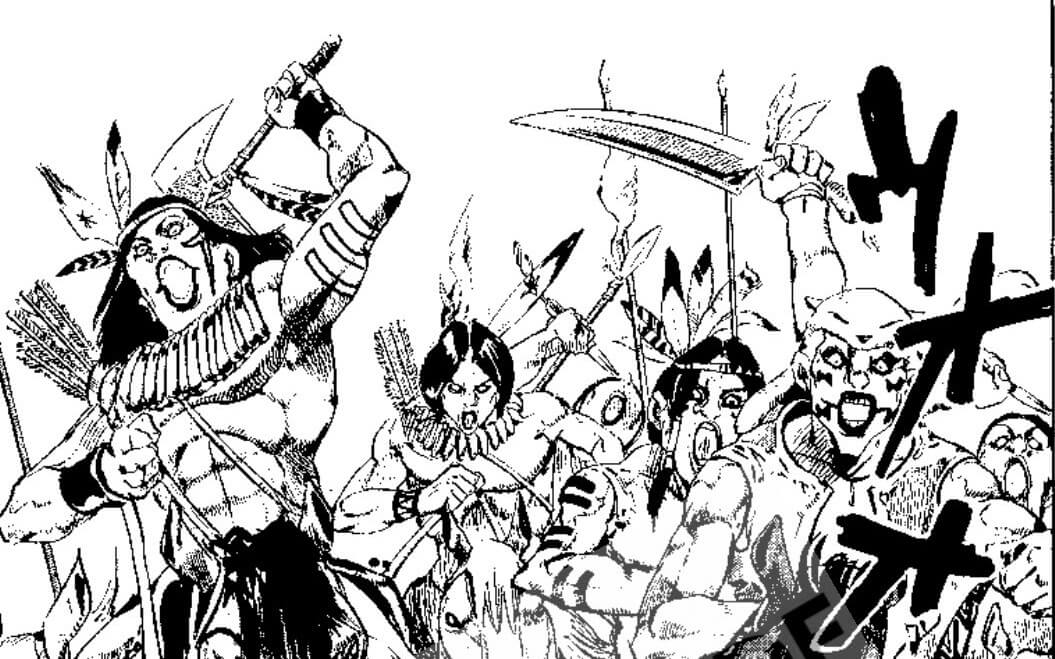
Pocoloco could be seen as a racist stereotype, since he’s a lazy, happy-go-lucky character uncomfortably reminiscent of “Jim Crows” and “Sambas”. But equally, he’s not that dissimilar to many of the other young men in the JoJo’s universe, such as Joseph in Battle Tendency, Nijimura in Diamond is Unbreakable and Mista in Golden Wind. His attitude and behaviour fits with his musical namesake, “Un Poco Loco” by Bud Powell. I can absolutely see that music playing over his various stunts throughout the chapters! He is also seen as being intelligent and knowledgeable about horses, even if he’s mostly just a lovable overly lucky fool.
However, that doesn’t take away the fact that he is still the only main Black character in a tribute to westerns, and he’s the only lazy fool of the lot. It might be that we’re in for a full subversion of these racist tropes. But right now, all we have to go on is what’s in volume one.
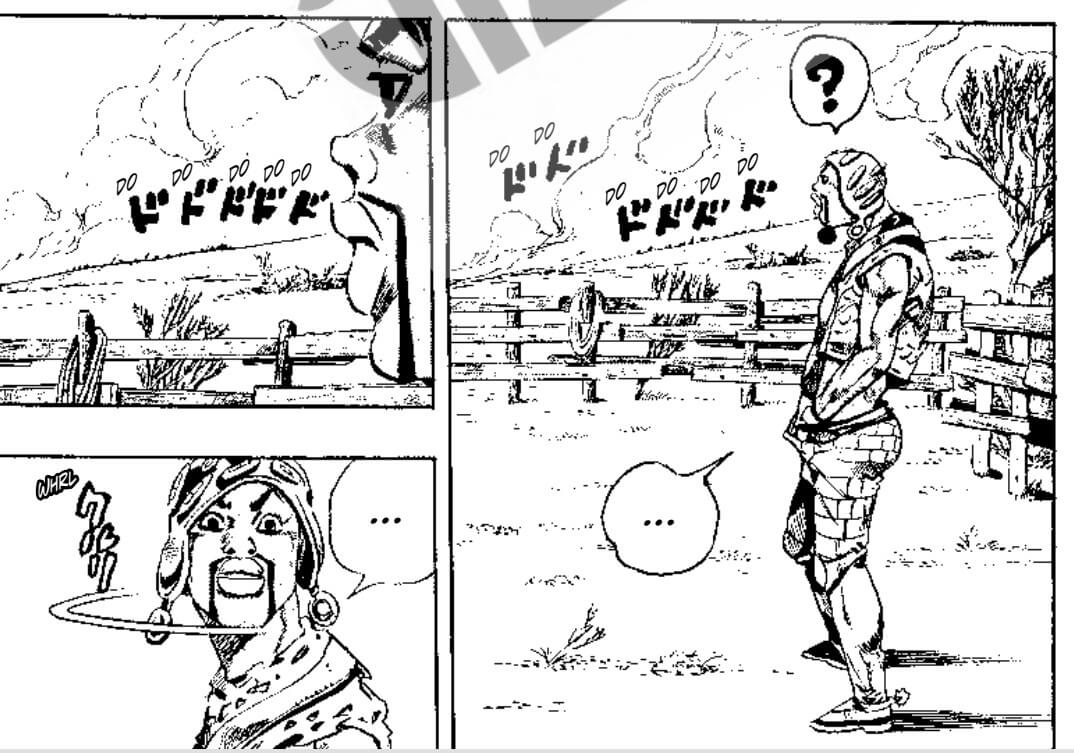
Being neither Black nor Indigenous, I don’t feel comfortable coming to a conclusion as to the type of representation here. But I do think it’s worth noting and opening it up for discussion with others.
Though I can happily report that, this time, there are no Nazis.
The Verdict
Steel Ball Run is another edition to the JoJo’s Epic that first began in 1980. There’s nothing particularly new happening here. It’s not a rehash or a repeat- it’s just more of the same, but this time with horses. This isn’t necessarily a bad thing. After all, that’s what the horde of dedicated fans are after! New stories, new adventures, same old Jojo!
It’s also what makes it a good way in for new fans. It’s a great taste of why people love this series, without having to suffer through some of the even more questionable and outdated parts. (Seriously, what was with the Nazis in Part Two?) However, if what you’re looking for is more characters like Jolyne, Ermes, and FF you’ll be flat out of luck. I think this has the potential to become a lot of people’s favourites! It’s a fresh start for the series, and with the anime on the horizon I’m sure this will become a firm favourite for newbies. Yet, despite being a recovering Horse Girl (gender neutral), I know this isn’t going to be my favourite. Not by a long shot.
If you liked JoJo’s Bizarre Adventure: Steel Ball Run Volume One you might also like …
- Appare Ranman
- Samurai Champloo
- Trigun
You can buy JoJo’s Bizarre Adventure: Part 7 Run Volume One from Amazon, Barnes & Noble, Bookshop, and Waterstones.
Credits
Original Artwork and Story: Hirohiko Araki
Translation: Nathan A Collins
Touch Up Art & Lettering: Mark McMurray
Design: Adam Grano
Editor: Holly Fisher
English Language Version published by Viz Media
Thank you to Viz Media for providing an advanced reader’s copy. This review copy had no impact on this reviewer’s opinions.
Article edited by: Bill Curtis
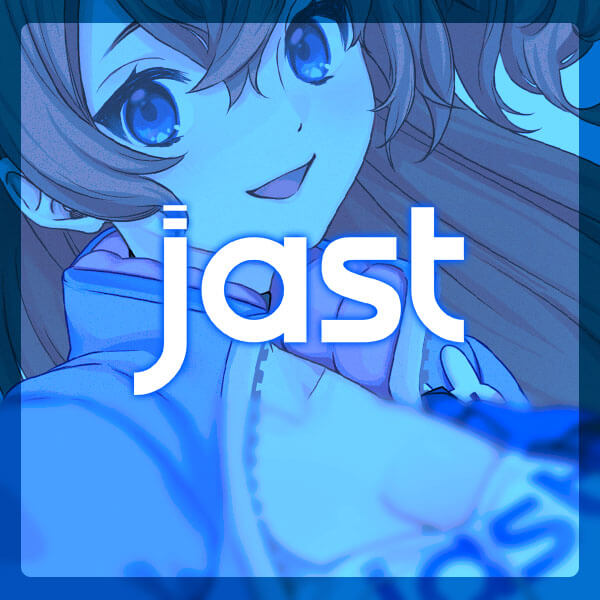
Featured Sponsor - JAST
The sweetest romance and the darkest corruption, the biggest titles and the indie darlings; for visual novels and eroge, there's nowhere better.
Big thank you to our supporters
From their continous support, we are able to pay our team for their time and hard work on the site.
We have a Thank-You page dedicated to those who help us continue the work that we’ve been doing.
See our thank you page